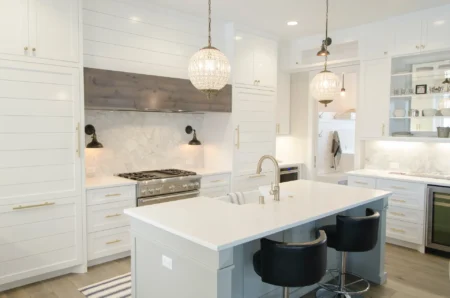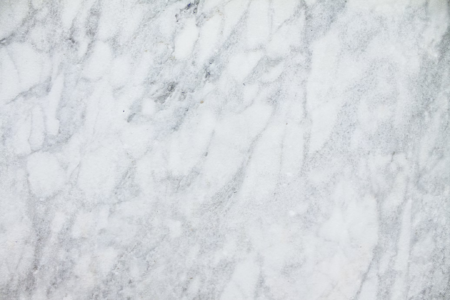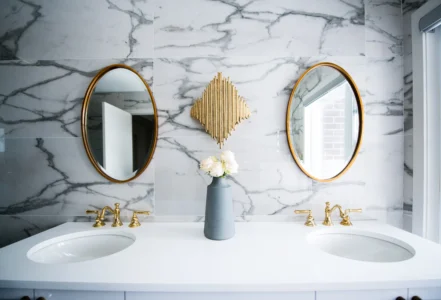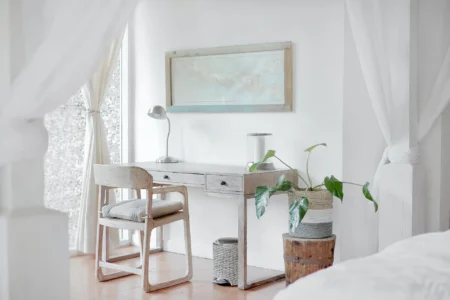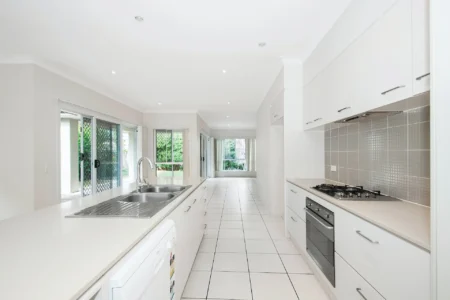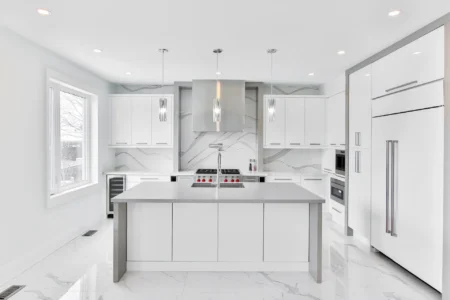It might be difficult to make the correct material selection for a home or business makeover. The market is overflowing with choices, and each one appears equally alluring as the last. But when it comes to flooring, marble and granite stand out owing to their popularity and classic beauty. Both are natural stone tiles that provide a distinctive balance of beauty and toughness. But which is superior? Let’s learn more about this subject so we can decide with confidence.
How to Choose the Right Material for Your Project
Before we compare marble and granite tiles, it’s essential to understand the factors that should guide your decision-making process.
- Durability: The material’s lifespan is an important consideration. You want something that can survive normal use while maintaining its beautiful looks over time. Although marble and granite are both resilient, their levels of resistance to stains and scratches vary.
- Aesthetics: The way the material looks and feels has a big impact on your choice. Granite has a more rustic and earthy feel than marble, which is recognized for being opulent and refined.
- Upkeep: Some materials need more attention and maintenance than others. Think about the time and work you’re willing to put into keeping your floors clean.
- Cost: Your decision will undoubtedly be influenced by your budget. To make sure you’re investing wisely, it’s critical to strike a balance between cost, quality, and lifespan.
- Environment: The substance should be appropriate for the setting in which it will be used. For example, certain materials might not be appropriate for damp spaces like bathrooms.
Now that we’ve established the factors to consider, let’s compare tiles, marble, and granite to see which one comes out on top.
Marble Tiles vs Granite Which One is More Trendy?
It’s vital to keep in mind that what’s fashionable now could not remain so tomorrow when it comes to interior design trends. But certain materials remain fashionable despite shifting fashions because of a timeless charm. Let’s compare how trendy tiles, marble, and granite are nowadays.
- Marble: Marble has a classic elegance that is always in vogue. It is a favorite of both interior designers and homeowners because to its distinctive veining patterns and soft, warm tones. Marble is a popular choice for high-end residences since it is frequently linked with elegance and refinement.
- Granite: When compared to marble, granite has a more rustic and earthy appearance. For those looking for a more earthy atmosphere, its speckled texture and range of color possibilities make it a popular alternative. Granite is a sought-after material in many homes even if it may not be as “trendy” as marble in terms of style.
Marble and granite are nearly equal in terms of trendiness. Both have their own special charm and can improve your space’s appearance in various ways. The decision between marble and granite would ultimately come down to your own taste and the appearance you’re going for.
Cost Analysis of Tiles, Marble, and Granite
When choose a material for your project, price is a crucial consideration. Let’s examine the prices for granite, marble, and tiles separately.
- Marble: Marble is frequently regarded as a high-end material, and its cost reflects this. The kind of marble, the size of the tiles, and the installation’s difficulty may all affect the price of marble tiles. Due to its aesthetic appeal and durability, many homeowners believe that marble is still a good purchase despite its greater cost.
- Granite: In general, granite is more expensive than most tiles but less expensive than marble. Granite prices might change depending on the material’s color, finish, and mining location. Similar to marble, granite is a long-lasting stone that may be used for many years, which lowers the overall cost.
It’s crucial to think about costs in terms more than just the cost of the first purchase. Take into account the material’s durability, the cost of installation, and ongoing maintenance expenses. Marble and granite may cost more up front, but over time they may end up being more cost-effective due to their longevity and timeless charm.
Conclusion
Making a selection between tiles, marble, and granite is not simple. The optimal material relies on your unique demands, financial constraints, and aesthetic choices. Each material has advantages and disadvantages. Granite offers strength and a rustic appeal, marble emanates richness and elegance, while tiles offer adaptability and affordability. You may make an informed choice that you’ll be delighted with for years to come by taking into account elements like durability, beauty, upkeep, cost, and trendiness.
Keep in mind that you want to pick a material that not only looks excellent but also endures over time. After all, investing in a makeover is a big deal, so you want to be sure you’re choose the right contractor for the job.
FAQs
Is marble or granite better for a house?
Both marble and granite have their advantages. Marble offers a luxurious and sophisticated appeal, making it ideal for areas where you want to make a statement, like the kitchen or bathroom. Granite, on the other hand, is more durable and resistant to heat and scratches, making it suitable for high-traffic areas.
Which is costly: marble, tiles, or granite?
Marble often commands the highest price due to its opulent appeal and distinctive veining. Granite is often more expensive than marble but more inexpensive than the majority of tiles. Typically, ceramic and porcelain tiles are the most affordable choice.
Which is better: granite or tiles?
Your particular requirements and tastes will determine whether you choose stone or tiles. Granite is better for kitchen counters and high-traffic areas since it is more heat- and scratch-resistant and durable. On the other side, tiles provide more design flexibility and are simpler to repair if broken.
Which tiles are best for flooring?
Due to its sturdiness, water resistance, and aesthetic appeal, porcelain tiles are frequently regarded as the finest for flooring. They may imitate the appearance of natural stone or wood and come in a variety of patterns, giving homes a high-end appearance at a more reasonable cost.

